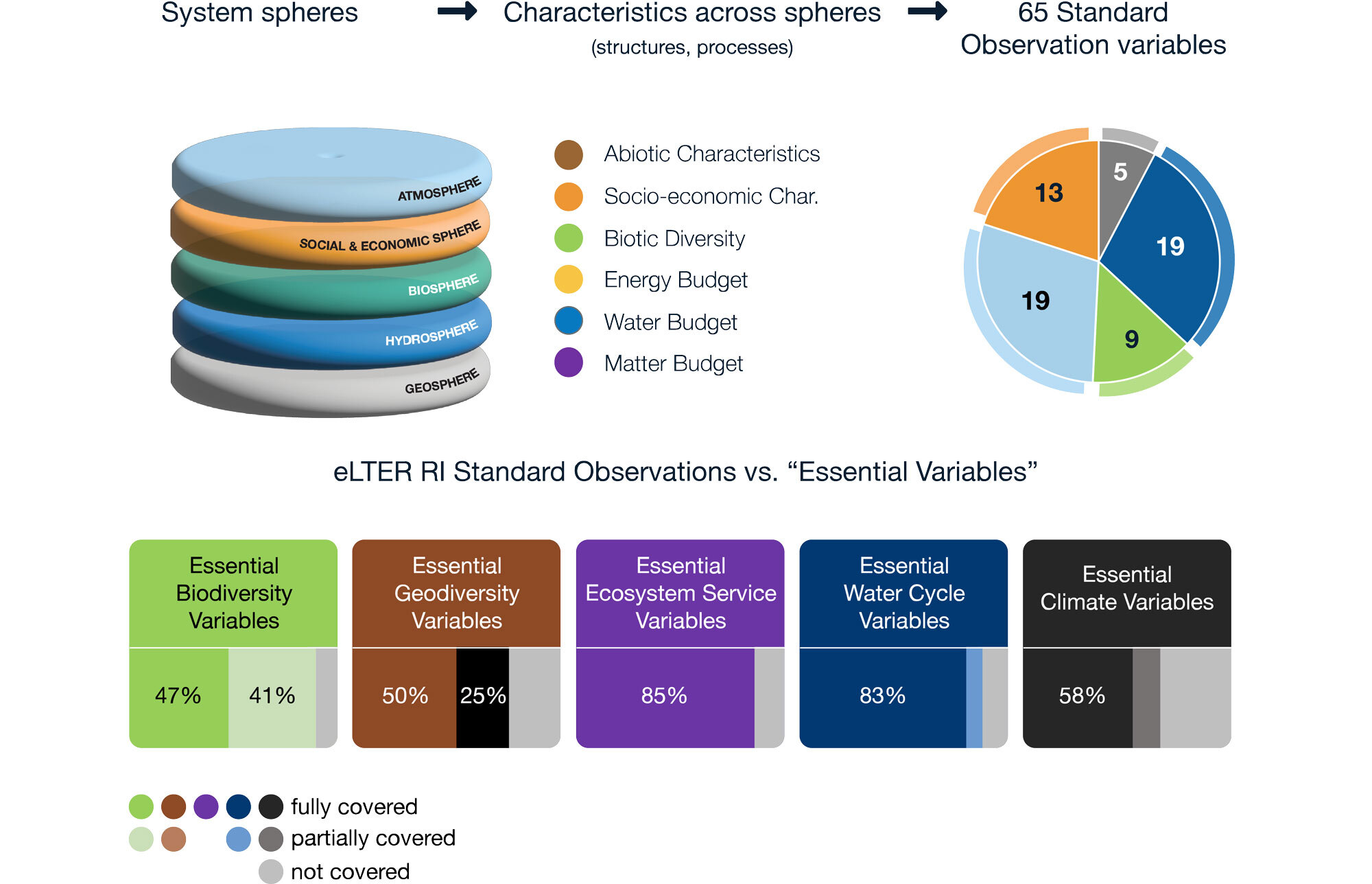Services, tools and standards
eLTER RI services consider the needs of a wide range of users
Over 30 stakeholder groups were condensed in 7 main stakeholder categories, including research, decision makers and peers in environmental research and observation.
During the construction process the services were clustered in 7 Thematic Service Areas.
About 20 initial services are already in operation (eLTER Service Portfolio).
All services will be available via the initial Service Portal as the single access point.


eLTER’s Cyberinfrastructure and tools play a key role in servicing innovative ecosystem research
The effective functioning of numerous services is contingent upon the existence of a sophisticated eLTER cyberinfrastructure, which serves as the technical foundation for the data management and information services of the emerging eLTER RI. The objective is to facilitate all workflows and processes with contemporary software, cloud solutions and key components, including catalogues, site and data registries, and data type-specific data nodes, which are the fundamental elements of the cyberinfrastructure. These will enable the objectives of eLTER and will allow eLTER to adhere to the FAIR principles.
eLTER Standard Observations as backbone service of eLTER RI
Standardising environmental and socio-ecological observations across sites, platforms and countries is essential for reliable trend information, comparisons across sites and generating data products at the European scale. The eLTER Standard Observations are also key for realising our Whole System approach.
Fundamental information is simultaneously gathered across all ecosystem spheres and covering the major structures and processes. eLTER Standard Observations variables were chosen for the following reasons:
- High sensitivity to system changes
- Supporting site comparisons and clustering
- Critical relevance for modelling
- Relevance for Remote Sensing ground truthing
- Simplicity (Parsimony), because “a design too complex increases the risk of premature demise” (Henry Janzen, 2014)
The 65 eLTER Standard Observation variables provide a backbone of information for all disciplines collaborating at sites and platforms. Depending on the habitat type and category of sites and platforms, 30-45 variables have to be mandatorily implemented.
eLTER activities at sites and platforms service multiple purposes: applying the eLTER Standard Observations bears the advantage to cover significant parts of other observation schemes like the Essential Variables for biodiversity, water cycle, geodiversity, ecosystem services and climate:
